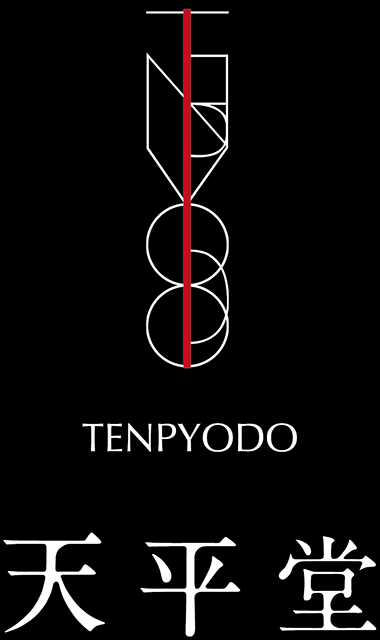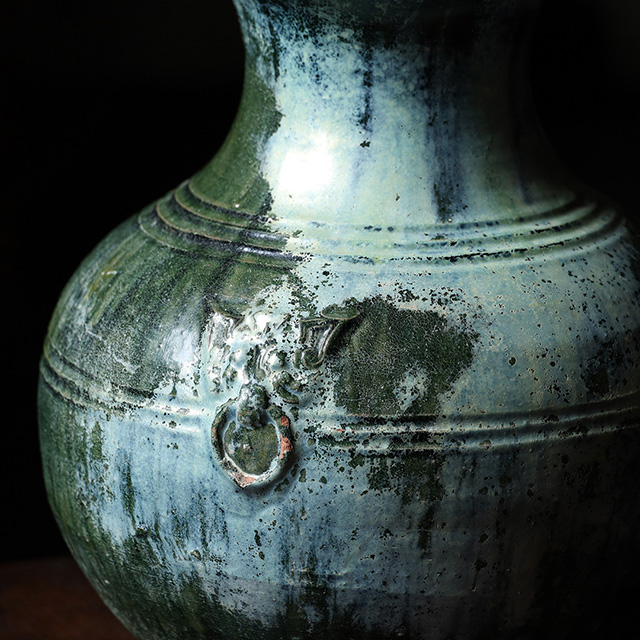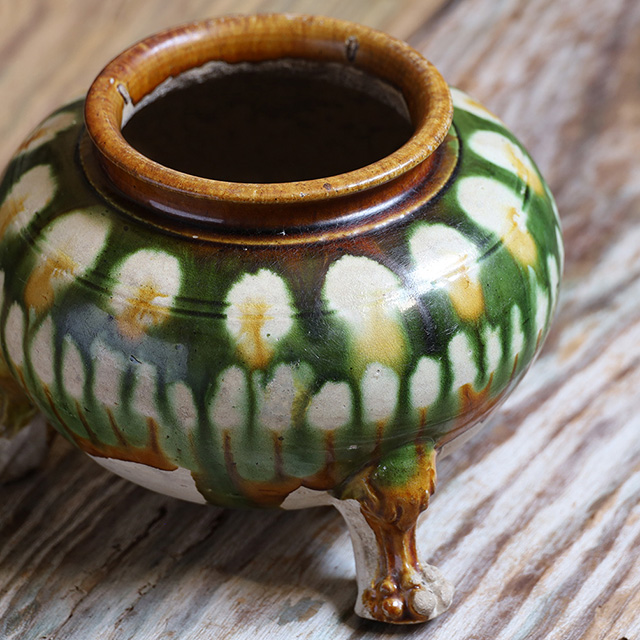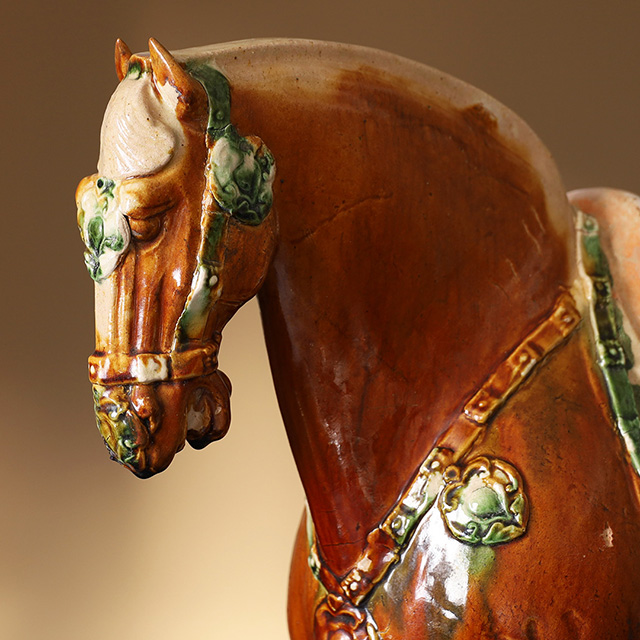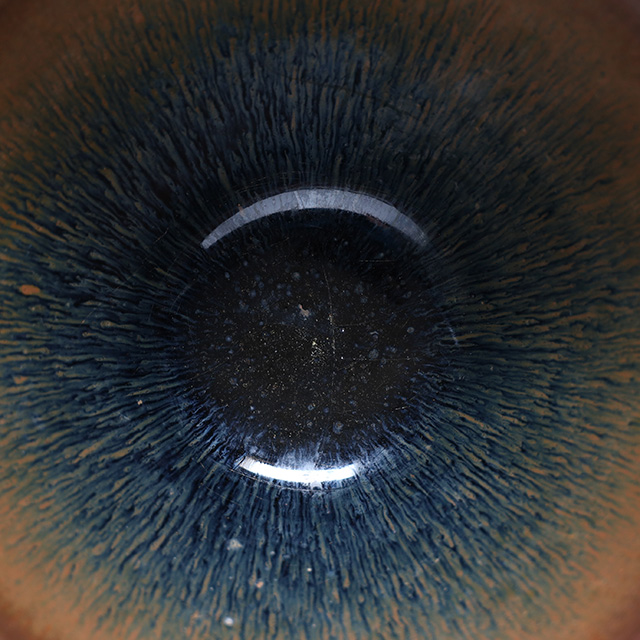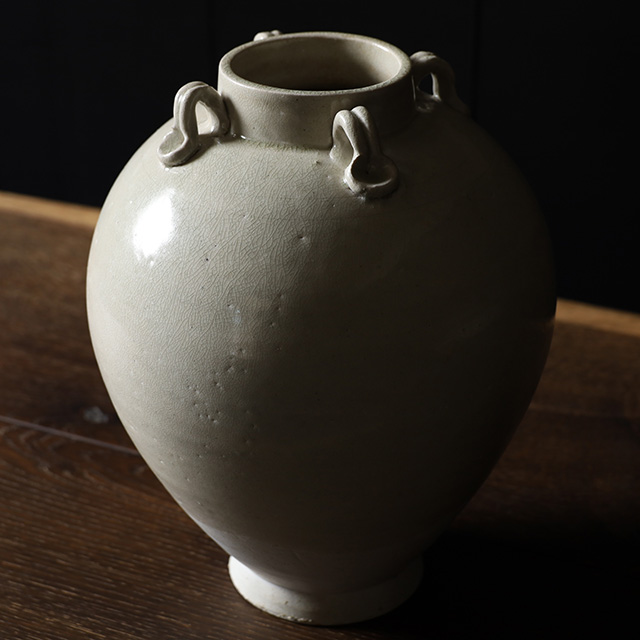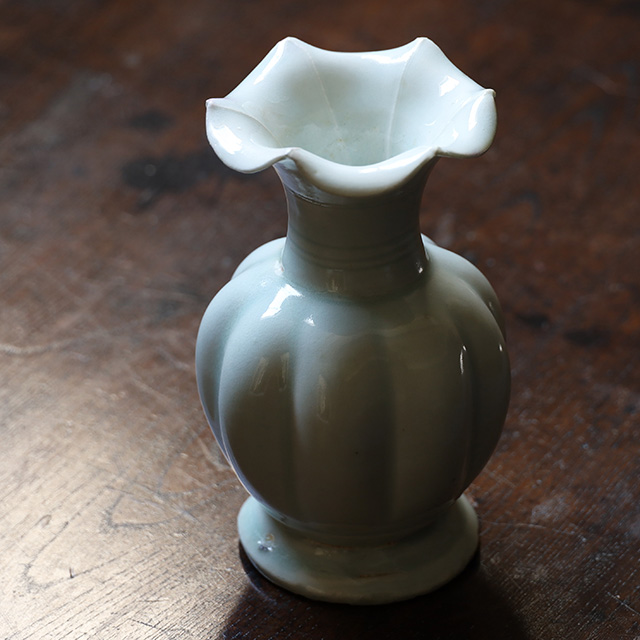Chinese Antique(Han・Tang・Song Dynasty)
中国古美術(漢・唐・宋時代)
Chinese Antique(Han・Tang・Song Dynasty)
https://tenpyodo.com/en/product1/cat/chinease-en/(Fine Arts ⇒ Chinese Antique)
Han-Green-Glaze
Brightly colored lead glazed pottery is a type of burial accessory that represents prayers for the deceased, and was made in large quantities during the han dynasty. In ancient china, the afterlife was thought to be an extension of the present world, and so objects such as jar, tableware, animal, house, and well were created to enable people to live a rich life after death, just as they did in life. The base is fine and contains a lot of iron, and when copper oxide is used as a coloring agent on the lead glaze, the green color is obtained. Low temperature lead glaze evaporates when it reaches temperatures of over 1,000℃, so it was fired at a low temperature of 700 to 800℃. Green-glaze was popular in shaanxi and henan provinces around the 1-3th century of the later han dynasty, and the core workshops were located in the two capitals of chang’an and luoyang. This is because people of this class were concentrated in the suburbs of the capital, and it is inevitable that excavated examples would be concentrated in this area. Many of the green-glaze have a silvery, iridescent coating on their surfaces due to the chemical changes caused by lead in the soil over many years, and are praised for their mysterious beauty and are called “Silverization” or “Laster”. The brown-glaze(colored by iron oxide)that flourished during the western han dynasty faded into the shadow of the heyday of the green-glaze, and the production volume of the later developed green-glaze is overwhelmingly large. Although the glaze is thick and generous, the inside of the jar or bottle is unglazed, and since it was a burial accessory and not a practical item, there would have been no problem as long as the glaze was applied only to the visible parts on the outside. Green and brown glazes are mostly used alone, but occasionally both glazes are used together on the same work of pottery. After applying a brown-glaze over the entire surface, green-glaze is added in some areas or colored with green-glaze. Conversely, there are no known cases of adding brown-glaze to the green-glaze. When these two glazes are used together, the green-glaze becomes unstable and peels off, and there are very few examples of beautiful two colored glazed. Because the firing method used was to overlap the mouths of the jars, the glaze on the rim of the mouth has peeled off, and when the jars were filled upside down in the kiln, the glaze flowed from the neck toward the mouth, causing glaze pooling. Han green-glaze was considered out of reach until around the 1970s, but with china’s reforms and infrastructure development, tombs from the han and tang dynasties were discovered in the 1980s, and large quantities of han green-glaze and tang-sancai ware were brought to japan, upsetting the supply and demand balance. The works that have been treated as masterpieces are different from the large number of excavated artifacts, and are not works that are considered to be all the same. The works, which have been treated as masterpieces, continue to fascinate people with their fresh green-glazed and beautiful silverization.
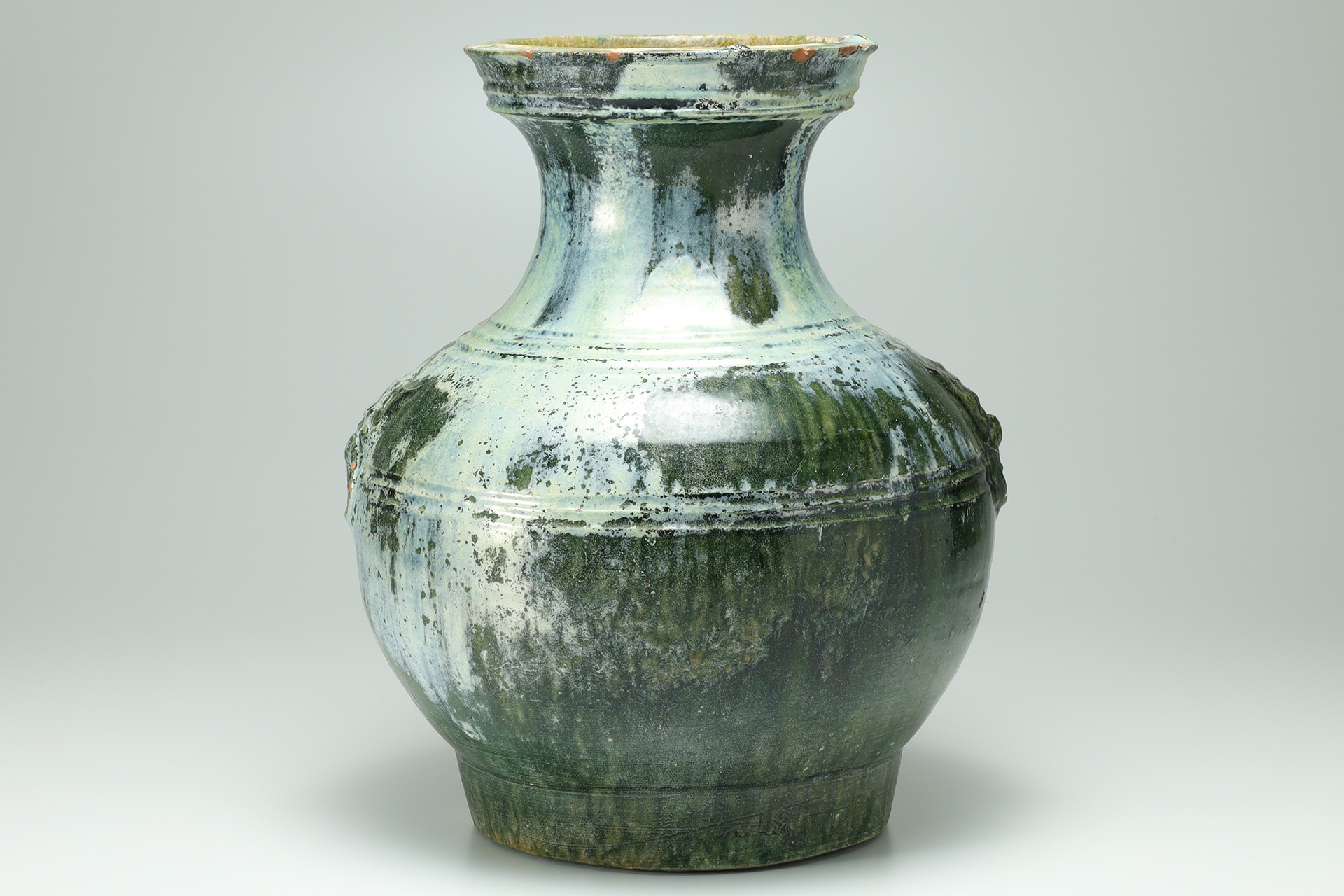
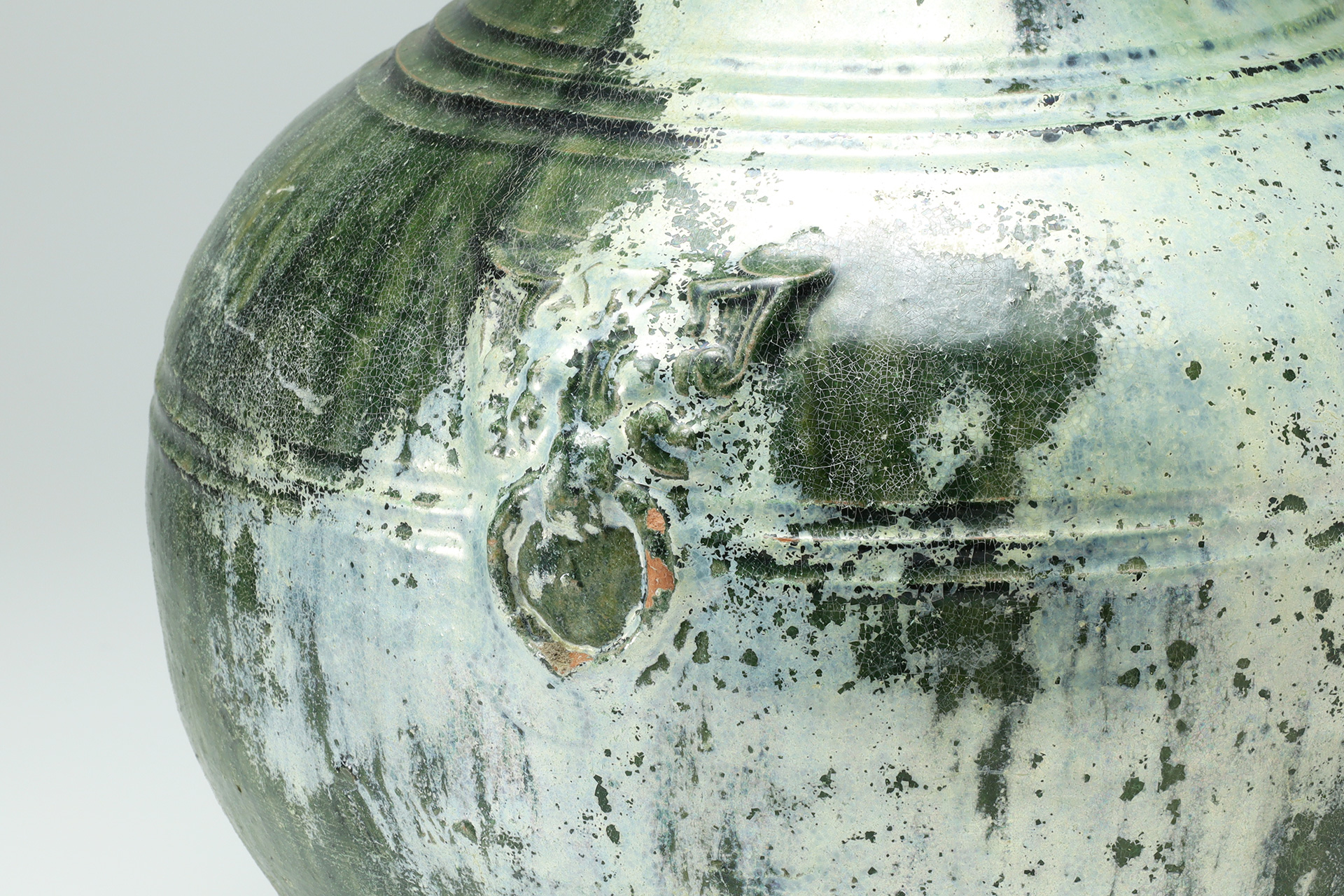
Tang-Sancai
Tang-sancai is a type of three colored pottery that was fired during the tang dynasty mainly in kilns near xi’an (formerly chang’an)and luoyang. As a general rule, they were burial accessories and were not intended for everyday use. It is the work of art that gorgeously decorated the tombs of royalty and nobility, and is also a treasure symbolizing the cultural exchange between east and west along the exotic silk road. In 1905, a large amount of sancai was discovered during railway construction between kaifeng and luoyang, and the discovery of these richly colored burial accessories, which had been virtually unknown until then, astounded the world. It was competitively sought after by collectors in europe and the united states, and quickly became a representative of chinese ceramics. Although there was a trend in japan to avoid burial accessories, collectors who were fascinated by the beauty of sansai gradually appeared, and a new style of ceramics collecting called “Appreciation Ceramics” was established, in which people purely admired the beauty of ceramics. Moritatsu Hosokawa(Eisei Bunko Museum), Koyata Iwasaki(Seikado Bunko Art Museum), Tamisuke Yokogawa(Tokyo National Museum Collection), and Sazo Idemitsu(Idemitsu Museum of Arts)are known as central figures who collected tang-sansai. By far the most examples of excavations have been found in xi’an in shaanxi province and luoyang in henan province, which were home to royalty and high ranking officials, followed by yangzhou in jiangsu province, which was a trading port. With the progress of excavations, the excavated area continues to expand, and it has spread to liaoning, hebei, shanxi, shandong, gansu, hubei, anhui, jiangxi, and other provinces, making it a fairly wide ranging distribution. After shaping the highly plastic clay, it is bisque fired at a high temperature of approximately 1,200℃. After cooling, a basic glaze(transparent glaze)is applied, green or brown lead glaze is added, and low temperature firing is performed at approximately 800-900℃. The colored glaze flows or bleeds because the base glaze becomes the base melt during firing, and the parts of each glaze that come in contact with each other fuse together, giving off a gorgeous color. Basically, there are three colors(white, green, and brown), but works that include blue and two colors with fewer colors are also collectively referred to as “Tang-Sansai”. It had a great influence on the ceramic industries of surrounding countries, including its own country’s “Liao-Sancai” and Japan’s “Nara-Sancai”, as well as “Silla-Sancai” and “Bohai-Sancai”.
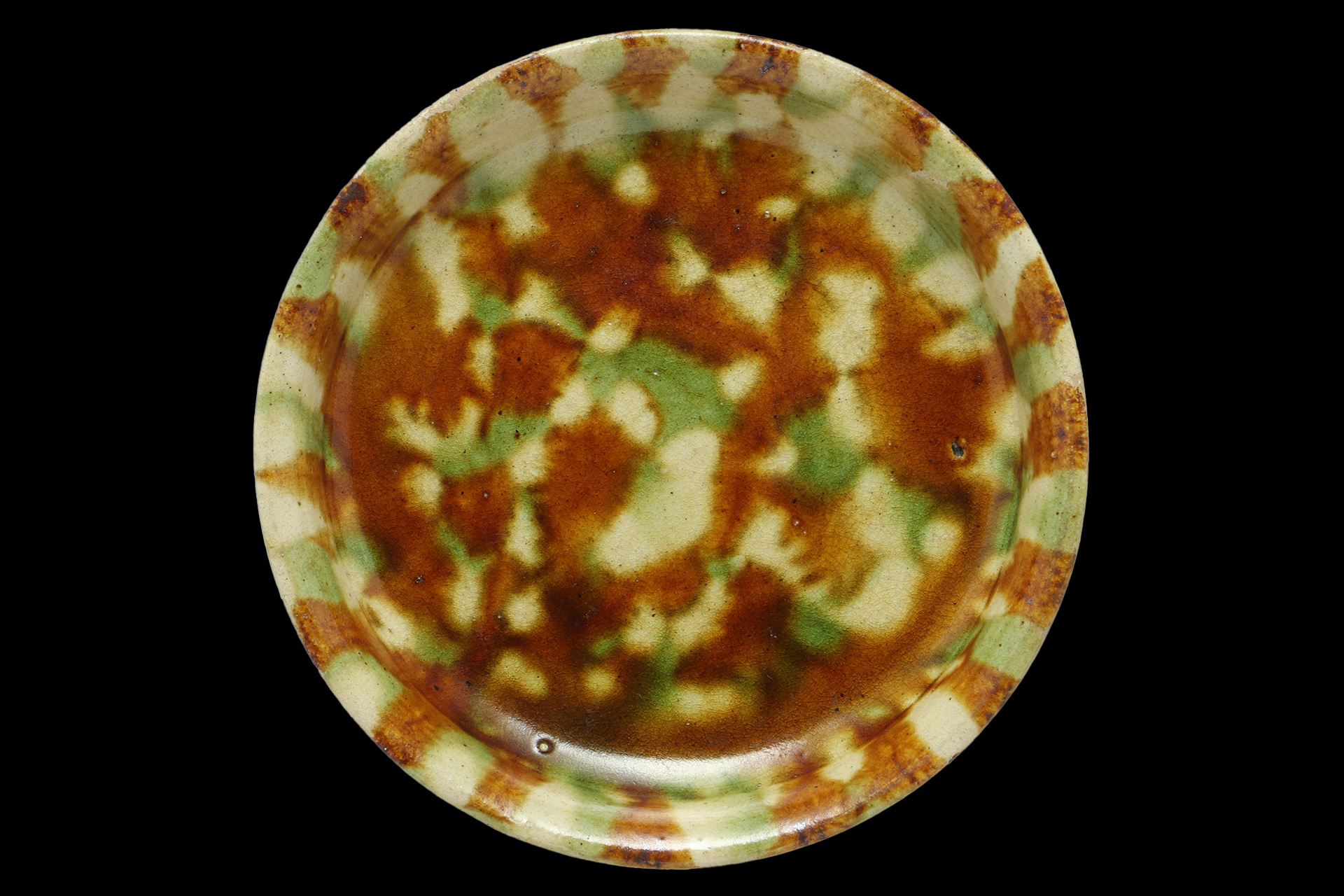
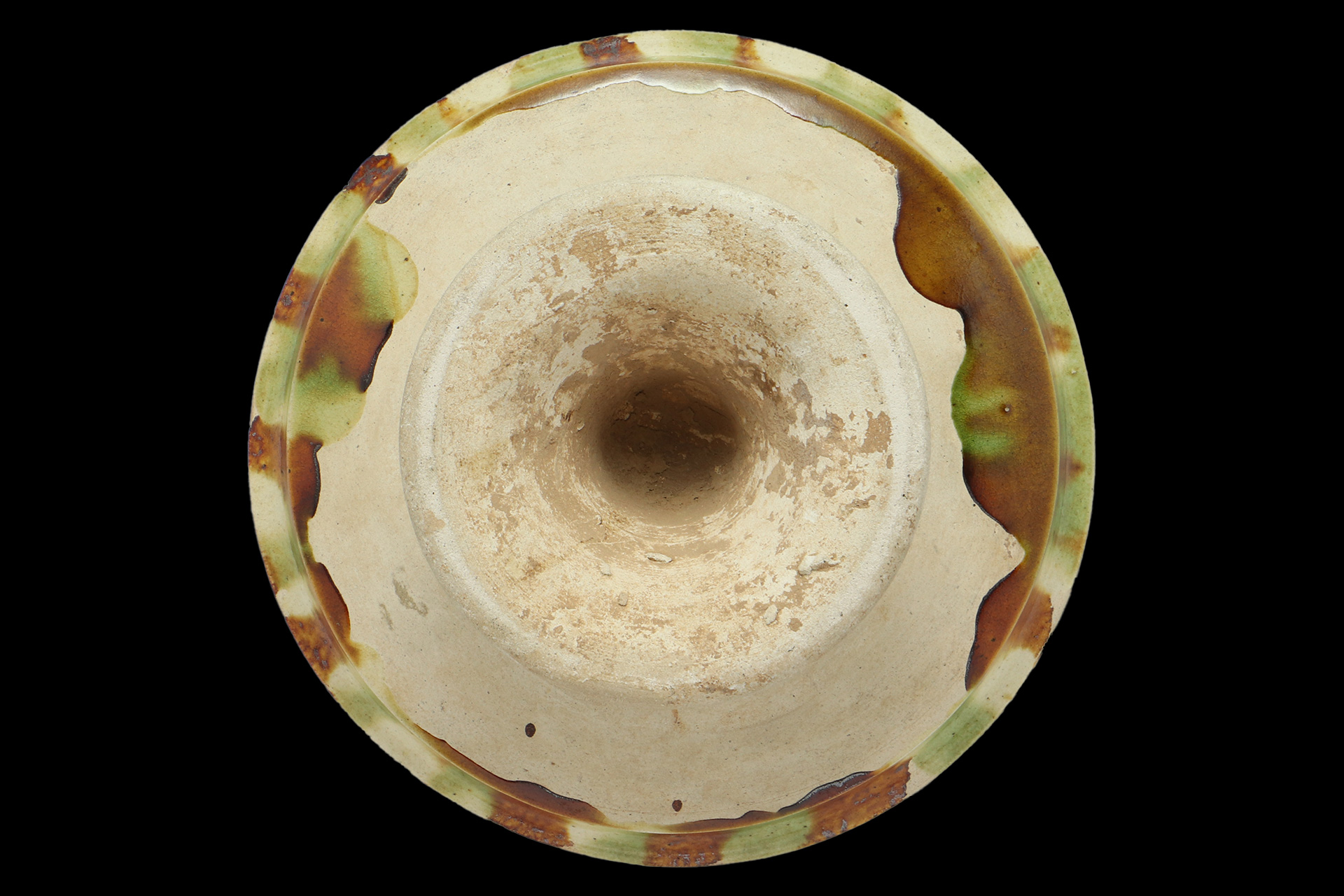
Qingbai Ware
The blue color of qingbai ware comes from the reduction firing of trace amounts of iron contained in the glaze. Starting with the jingdezhen kiln in jiangxi province, it was also fired in guangdong, fujian, zhejiang, anhui, and henan provinces.
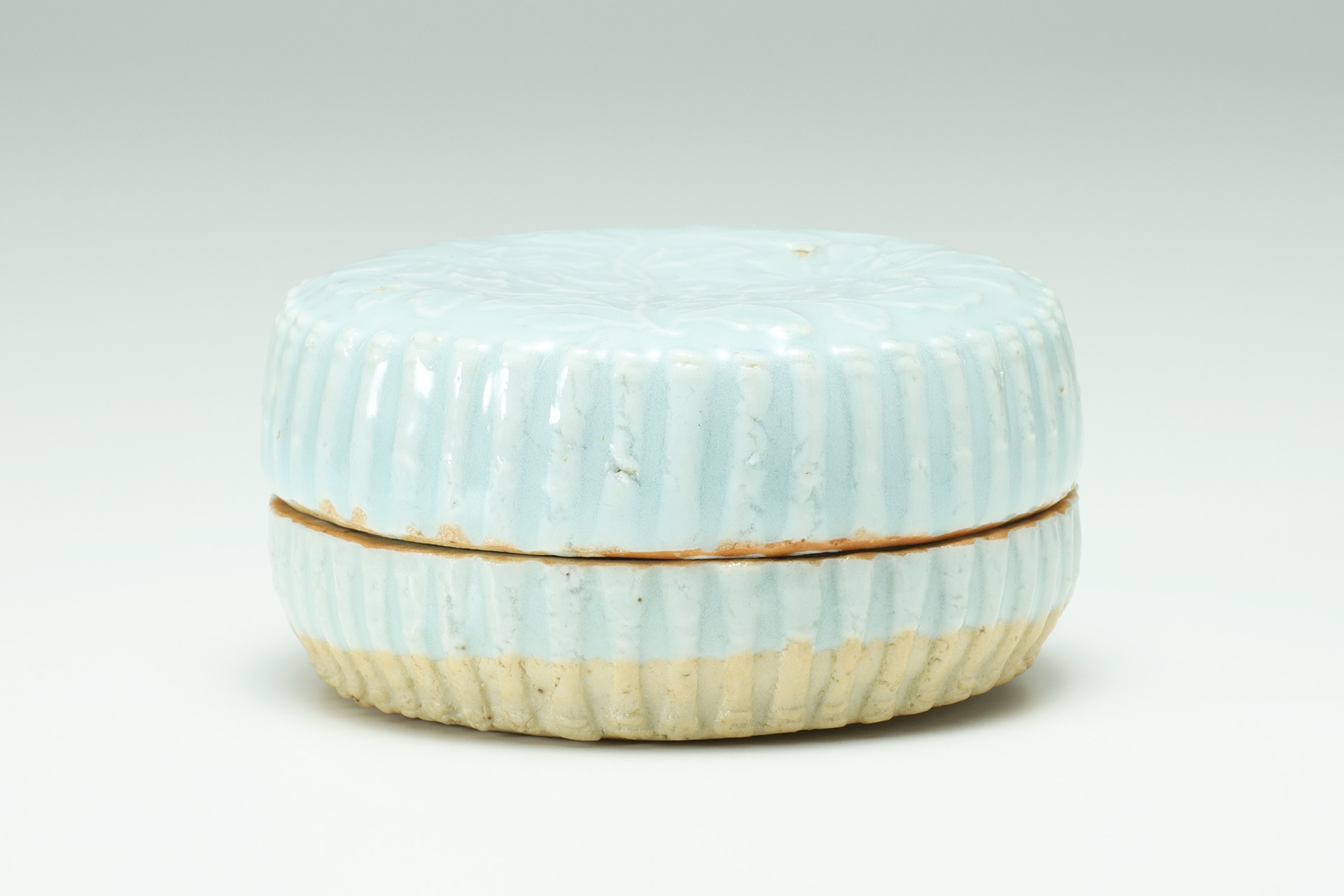
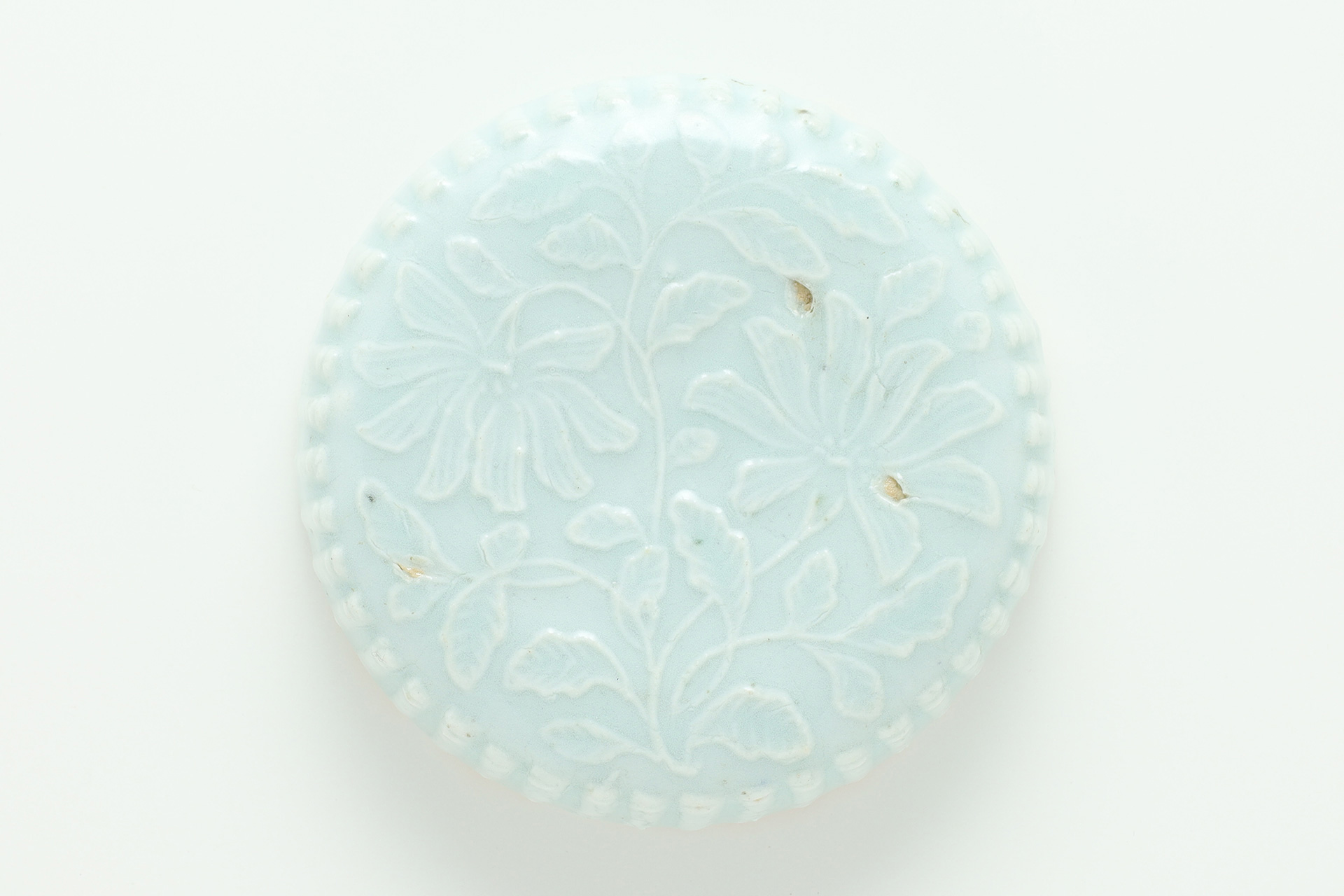
天目
天目とは抹茶喫茶に用いられる茶碗です。
中国淅江省の北部と安徽省との境に「天目山」という禅宗の中心地があり、
鎌倉時代に日本からも多数の留学僧がここにあった禅刹に訪れました。
彼らは寺で常用していた黒釉碗を日本に請来し、「天目」と呼んだ事が語源になっています。
低く小さな高台、漏斗状に開いた腰部、口縁は内側にやや窄まった後に外反する鼈口、
高台とその周辺は露胎といった条件を備えています。
曜変天目、油滴天目、禾目天目(兎毫盞)、玳玻天目(玳玻盞)、灰被天目等の種類があります。
建窯の天目茶碗には口縁に金や銀の覆輪を被せた例が多く見られますが、
これは口縁のざらついた素地の感触が不快な為に被せられたものです。
天正年間(1573~92)後半頃から次第に茶碗の主役は高麗茶碗等へと移り替わり、
天目茶碗の使用は儀式用に限定されて天目台を下部に添えて使用されました。
日本で国宝に指定されている茶碗は、
中国の曜変天目3碗(静嘉堂文庫蔵、藤田美術館蔵、大徳寺龍光院蔵)・
油滴天目1碗(大阪市立東洋陶磁美術館蔵)・
玳玻天目1碗(相国寺承天閣美術館蔵)、
朝鮮の大井戸茶碗「喜左衛門」1碗(大徳寺孤篷庵蔵)、
日本の絵志野茶碗「卯花墻」1碗(三井記念美術館蔵)・
本阿弥光悦茶碗「不二山」1碗(サンリツ服部美術館)の合計8点の内、
約半数が天目茶碗で占められているように茶碗の最高位を示していた様子が窺えます。
We sell and purchase Chinese Antique(Han・Tang・Song Dynasty)
We have a physical shop in Hakata-ku, Fukuoka City, where we sell and purchase "Chinese Antique(Han・Tang・Song Dynasty)" works. Drawing on a long career and rich experience in dealing, we promise to provide the finest service in the best interests of our customers. With the main goal of pleasing our customers, we will serve you with the utmost sincerity and responsibility until we close the deal.
